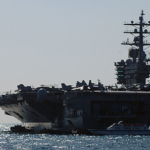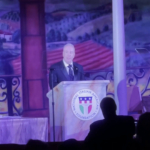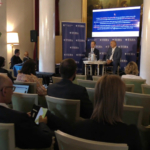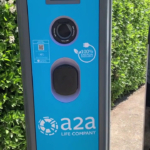The 48-hour cease-fire in place from November 19 to 21 between the Al Houthis and forces loyal to President Hadi in Yemen has failed. Since the beginning of the truce, violations have been committed by both sides, thus an extension resulting impossible. Similarly, the ceasefire scheduled for the night of 17 November did not take place, following the clashes occurred in the city of Taiz, which had killed more than twenty people.
If the end of hostilities on the ground is still a dream, it is even more unlikely for a political settlement -which should end a conflict that has affected the country for 20 months- to be set in the near term. In the past few weeks, negotiations and meetings have taken place between the US Secretary of State John Kerry, the special UN envoy Ismail Ould Cheikh Ahmed and mediating countries such as Oman in order to deal with the conflicting parties and to draw up an acceptable plan to restore stability and security in the country.
Several proposals have been rejected, including the last one presented by Kerry, according to which President Hadi would relinquish his power to a new vice president in return for the Al Houthis withdrawal from all major cities and the handover of their weapons to third neutral parties.
To date, indeed, no agreement has been achieved, considering the reluctance of both the players to give up those power and control they have in the country. On the one hand, President Hadi refuses to relinquish his powers; on the other, the Al Houthis want to keep their weapons. This allows them to maintain a certain power in national politics, making them a good candidate to be a new Hezbollah in Yemen -not just a major political opponent but also a militarily strong one. Although international attention is currently focused on other issues, the conflict in Yemen becomes day after day more relevant in regional and international political games.
Let’s go back to the beginning of the conflict, in November 2011, when following a popular uprising, the then-President Ali Abdullah Saleh was forced to give in power to Abdrabbuh Mansur Hadi. The new president, however, did not manage to deal with several domestic issues, such as unemployment, corruption, hunger, terrorism, leaving the population at the mercy of plagues that eliminate any hope to restore stability in the country. In September 2014, with the support of former President Saleh, the rebel group known as Al Houthis, Zaidi Shia-led political-religious movement, took control of the northern region of the country, entering the capital Sana’a. The then-President Hadi was put under house arrest and forced to flee to Aden the following month.
Confrontations started between two factions: the Al Houthis, allied with Saleh, who control the capital Sana’a and the internationally recognized government of President Hadi, based in Aden. Supporters and allies on both sides complete the bigger picture. In March of 2015, a Saudi-led military coalition began an air campaign against rebel positions, in order to restore Hadi government. Since then more than 10,000 people have been killed in the conflict and living conditions in the country have deteriorated drastically, resulting in a humanitarian crisis.
On the other side, though repeatedly denied, there seems to be Iran’s political and military support, something similar to what we have already seen in Lebanon with Hezbollah. According to Brigadier General Ahmad Asseri, spokesman for the Saudi coalition, a link would exist between the terrorist group Hezbollah and the Houthis. Members of the Lebanese group have been seen among the Shiite militants in Yemen.
Moreover, the terrorist groups of Al Qaeda in the Arabian Peninsula (AQAP) and the Islamic State (ISIS) add chaos to this picture, exploiting the instability of the region to pursue their political agenda. Indeed, they managed to take control of some areas in the southern provinces (government-controlled area), making even more difficult to restore security in the country.
It is clear that the conflict in Yemen is not limited to the political parties on the ground, but affects several external actors and is connected to the political dynamics of the Middle East. Once again, in fact, we see the couple Saudi Arabia-Iran, fighting for hegemony in the region and the division between a Shiite component, currently controlling the North of the country, and a Sunni-dominated south region, headed by Hadi government.
It should be added that the conflict in Yemen in not just a theatre for the proxy war between Riyadh and Tehran, but also a destabilizing factor for the international trade. Houthis’ missile arsenal, indeed, guarantees the rebels an effective means to hit ships transiting the Strait of Bab el-Mandab, one of the busiest routes of world trade. About 4 million barrels of oil a day pass through this strait; therefore, the security in this area is a necessary condition not only for regional actors but also for other stakeholders, such as European countries and the United States, heavily dependent on energy coming from this region.
It is more understandable why negotiations held by US and UN include the handover of rebels’ weapons to neutral units; similarly, it is clear why the Houthis want to maintain at least their light weapons, as a key tool to keep power in national, regional and global dynamics. Consultations will continue in order to reach an agreement as soon as possible. However, it has to be seen how the new US administration will deal with this issue. According to Donald Trump, the United States should stay out of conflicts that do not directly threaten its national interests and the war in Yemen does not seem to be a priority.
Paola Fratantoni







